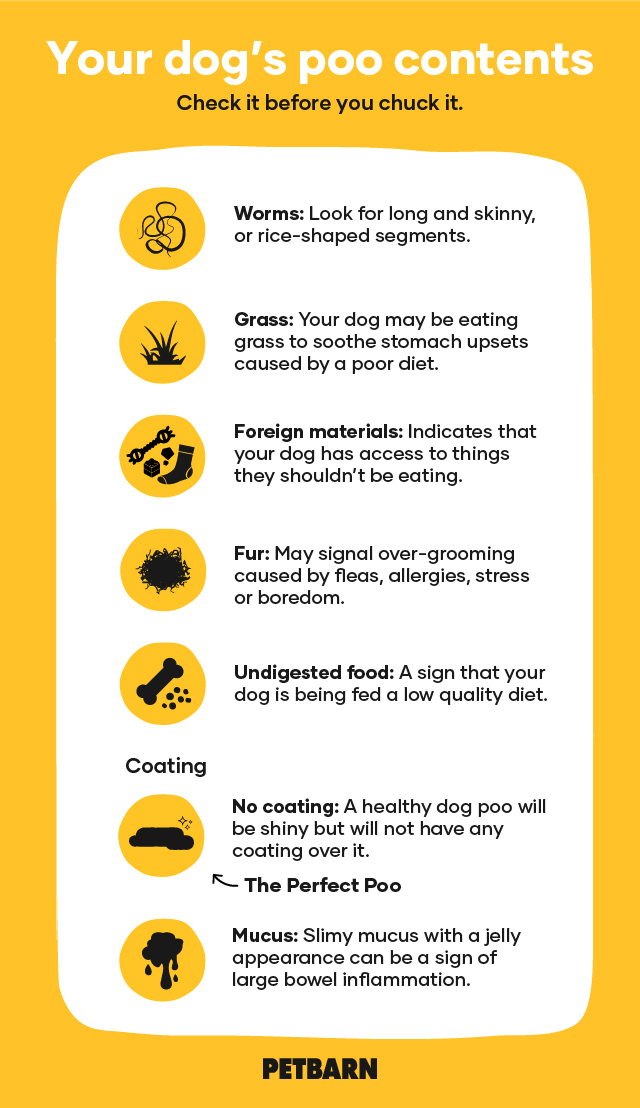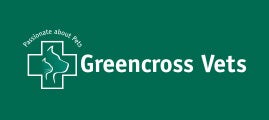Is mucus in dog poo normal? What about fur? Learn what contents do and don’t belong in a healthy dog poo.
While you’ll always find little bits of non-digestible materials in your dog’s poo like fur and grass, a healthy dog poo should just be that – poo. If you’re noticing significant amounts of extraneous material in your dog’s waste or a slimy mucus coating, this suggests certain health concerns.
Contents
Worms in dog poo
If you’re seeing white spots in your dog’s poo, these are often intestinal worms. While worms can make their way into a poo after the fact, if you’re noticing these parasites in a freshly produced poo then it’s highly likely that your dog is infected. Remember that some worms may be too small to be seen with the naked eye and so even if you can’t see worms in your dog’s poo, this does not mean that they don’t have worms.
The most common worms that you may spot in your dog’s poo are roundworms which have a long and skinny appearance, or tapeworm segments which look like grains of rice. You may also see whipworm and less commonly hookworm. Take a sample of your dog’s poo to your local Greencross Vets to diagnose which intestinal worms your dog has contracted. In the future, avoid your dog from contracting worms by using our Flea, Tick and Worm Treatment Finder to discover the best combination of products that will protect your dog from the parasites in your area.
Grass in dog poo
A small amount of grass in your dog’s poo is normal but an excess signals problems. Dogs often eat grass to soothe gastrointestinal upsets or increase their intake of dietary fibre caused by a deficiency in their own diet, so if you’re seeing a large amount in their poo, this indicates a need to re-evaluate what you’re feeding them. A one-off bout of excess grass in your dog’s poo shouldn’t be a concern but if it continues, be sure to take them into your local Greencross Vets for a checkup.
Foreign materials in dog poo
Dogs are curious creatures who love to follow their nose and chew on everything. If you notice foreign materials like plastic, socks, grass, rocks and more in your dog’s poo, then you should consider dog proofing your home and yard to prevent your dog from accessing things they shouldn’t swallow.
Fur in dog poo
Your dog’s poos will always contain a small amount of fur as they will swallow loose hair when grooming themselves. However, if you’re noticing large clumps of fur in your dog’s poo, this can be a sign that they’re over-grooming. This can happen if your dog is itchy due to skin disease and allergies caused by their food, parasites and more. Other reasons that your dog is constantly licking themselves can be related to stress or even boredom. Speak to your local Greencross Vets if you’re concerned about your dog’s health.
Undigested food in dog poo
If you’re seeing pieces of undigested food in your dog’s poo, there are two main causes of this. The first is that food of a poor quality will pass through your dog and not be digested. Your dog will not receive the nutrients they need to live a happy and healthy life from this sort of food, and you should use our Dog Food Finder tool to understand the right diet for your pet. This problem can also be caused if your dog is not able to digest food properly due to an underlying medical problem, such as disease of the pancreas, liver, gall bladder or intestinal tract. Your dog needs to be checked by your Greencross Vet to determine which of these, if any, may be contributing to the problem.
Coating
No coating
Healthy dogs will produce poos that are shiny due to the moisture content, but will not have any appreciable film or coating over it. When you’re picking up these poos, there shouldn’t be any residue left on the ground.
Mucus over dog poo
Mucus appearing over a dog’s poo can happen if you change their diet too suddenly or feed them food that they have an intolerance to. If your dog isn’t showing any other adverse symptoms, a small amount of mucus in their poo shouldn’t raise any alarm bells as it’s a natural substance made to lubricate the colon and help them pass the poo. However if your dog’s poo is coated in a layer of slimy mucus, and if mucus appears along with other symptoms such as diarrhoea, blood in the poo or a change in the poo’s colour you should take them to see your local Greencross Vet.
A sure-fire sign that your dog is eating the right food is if they’re producing firm brown poos with no coating and minimal additional contents. To make sure that you’re providing your dog with complete and balanced nutrition that suits their age, breed and activity level, use our Dog Food Finder tool or chat with your friendly local Petbarn team member.





